
One of the most intriguing artifacts discovered in four seasons of excavation at Tell es-Sa’idiyeh in Jordan is the small clay statue found on February 17, 1967. I first heard of the discovery when Dr. John Huesman, S.J., field director of the staff of ten who made up the 1967 expedition, telephoned me in Beirut, where I was teaching for the spring term, to say that he had found a figurine in almost perfect condition. Yet, I was not surprised, for clay figurines had been found in almost every excavation of Iron Age remains; it would be easy to classify, I thought, since I had once studied all the published examples and written a monograph about them.
When I reached the expedition camp which we had rented for the six-week period from the Canal Authority at Wadi el-Yabis, I found that the figurine was not at all what I had imagined. Clay figurines found in Palestine have been, almost without exception, images of the nude female figure and popularly referred to as Astarte or fertility figurines. But this figure, while it was of about the same size as the well-known type, was clearly the representation of an old man clothed in a long robe of several colors. It was immediately obvious that it would not be easy to identify this “what-in-the-world” specimen.
There was no question as to where it should be placed in time. For dating the context was decisive: eighth century B.C. It came from the five-meter-square plot called 23-D-3, which in the middle of the eighth century had been occupied by one of the dozen or so row houses that had been erected by one builder according to a uniform plan and dimensions. The figurine had been found immediately below the floor of the house within the debris that remained from the collapse of a slightly earlier house. To judge from the impressions of reeds on the clay which had once covered the roof, the house had fallen in; happily, the rather fragile object had survived for about 2800 years, complete except for the loss of one eye.
The figurine measures just six inches from the top of the headdress to the bottom of the robe. It is handmade from well levigated clay that has been
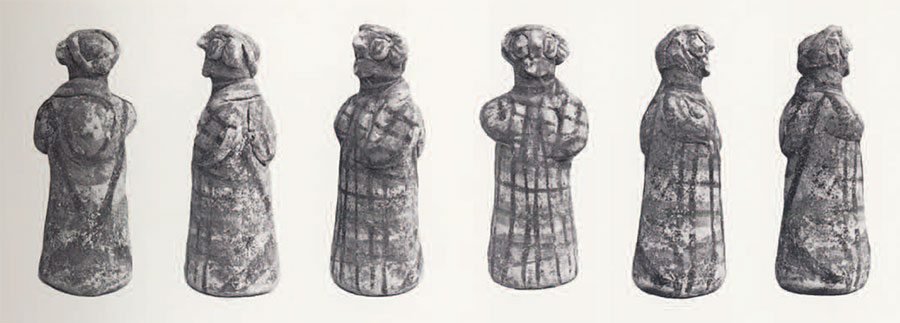
fired to a tan color. The body is hollow up to the neck; and the inside of the opening at the bottom has been rounded, possibly from the form of the stick on which it was fashioned, perhaps with the intention of providing a socket by which it could be fitted upon a support or standard.
The most noticeable feature of the head is a prominent aquiline nose. Eyes had been indicated by pellets of clay; and ears are represented by globs of clay stuck on to the sides of the head. No attempt, apparently, had been made to represent a beard. The top of the head is encircled by a single strand of clay to suggest a turban or fillet that held the hair in place.
Both arms are bent at the elbow so that the hands rest high on the chest; the left hand obviously is intended to grip the upper part of a bag that is slung over the left shoulder and contains a rounded, flat object that rests squarely in the middle of the back.
The garment is evidently a long-sleeved robe decorated first by three broad stripes of white wash that encircle the lower part of the garment; imposed upon them are vertical and horizontal lines of red-brown and black paint. The latter decoration, however, is limited to the front and sides. The back of the figure is decorated by two broader stripes that extend from the shoulders downward to form a large letter V. The man is corpulent, and a slight bulge of the robe at the abdomen suggests, with a touch of realism, an aging man. Despite certain grotesque features, the statuette gives the impression of a man of dignity and composure.
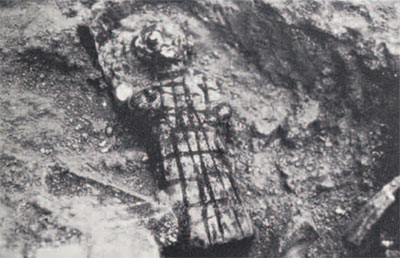
The collection of objects found in context with the figurine indicates that the room was considerably richer than most living quarters of the eighth century. There was a bowl carved from basalt, supported by three legs, each with four ribs that may represent fingers of hands. Underneath the bowl are three struts which could well have been intended to represent the thumbs of the three hands that presented the bowl. A gold earring, two lamps, four juglets, two bowls, two shells, an iron chisel, and an iron knife completed the assemblage of artifacts found with the figuring.The practice of molding the human form out of clay reaches far back into Neolithic times in Palestine. The earliest attempts are to be seen in the grossly steatopygous female figures, like the one found by Jean Perrot at Munhata in 1965, possibly the early emblems of fertility for field, flock, and family. By the Middle Bronze Age (about 1700 B.C.), the female figure was mass-produced in the form of clay plaques stamped from a mold. Not until the advent of the Iron Age were clay figures in vogue. The stylized pillar topped with exaggerated bosom supported by the arms and hands was molded by hand. After the features of the face and the hairdo were pressed on the clay by a small mold, the head was attached to the body by a dowel. Throughout this development over several millennia, there seems to be no artisan who departed from the accepted canons of style in an attempt to portray individuals. Their products were consistently as anonymous as a manikin.
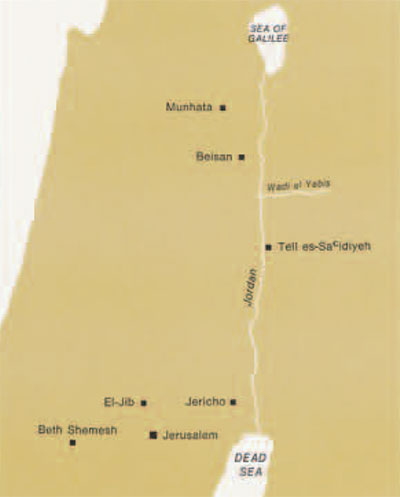 Male figures are almost always made of bronze and frequently coated over with gold or silver foil. The high conical headdress, the upraised arm, or the extended arms of these figures make it apparent that they were intended to represent the male divinity.
Male figures are almost always made of bronze and frequently coated over with gold or silver foil. The high conical headdress, the upraised arm, or the extended arms of these figures make it apparent that they were intended to represent the male divinity.
Obviously the figurine from Tell es-Sa’idiyeh is an anomaly in the well documented series. What was the intention of its maker? And how was it used? In the light of our failure thus far to find any parallels from the several hundred sites excavated in Palestine-Syria, one can only suggest a tentative working hypothesis: This is an early eighth century attempt at portraiture, the representation of an old man with a bag over his shoulder, possibly a traveller. It could be that with the socket in the base it stood on a peg in a shrine as the perpetual presence of its owner before his god.
Two features of the figurine do align with other archaeological data. First, if the prominent nose can be taken to suggest anything about the racial type which the figure is supposed to represent, it surely points toward the Hittites, who were frequently represented with the aquiline nose. In fact, the same feature is to be seen on a rare painted profile found on a potsherd from Beisan, just a few miles to the north of Tell es-Sa’idiyeh.
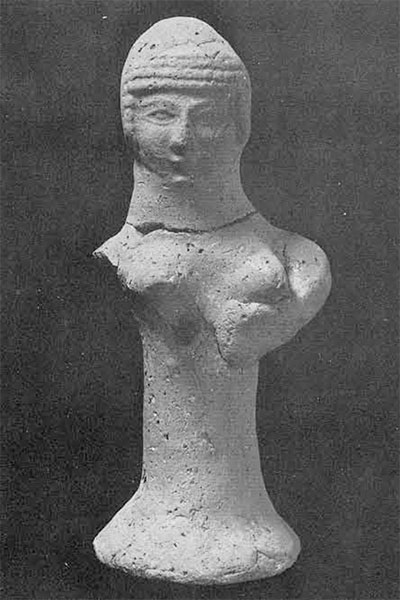

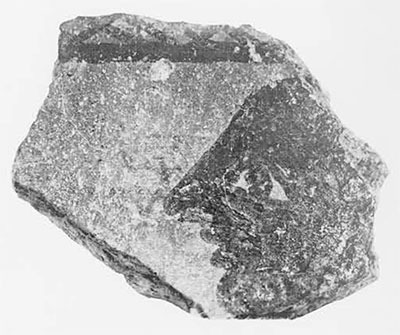
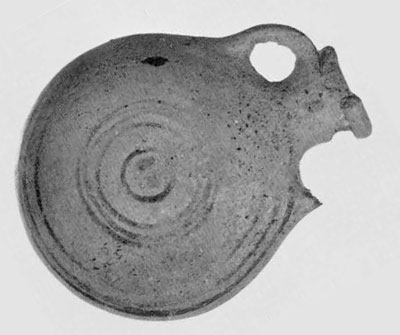
The bag slung over the shoulder in “book bag” fashion is a unique feature of the representation. It would seem to hold a rather flat, round object. One possibility is that the bag contains the flat, rounded cakes of bread baked in the Near East today; yet, there is no evidence that this form for loaves was current in the Iron Age. The more plausible explanation of the rounded object is that the bag contains a water decanter of a form so common from the Late Bronze Age through the Iron Age. This flask, which is generally equipped with two handles, is too large and too fragile to be strapped to the waist of the traveller. A more practical method for carrying it would have been to put it into a bag carried over the shoulder or to suspend it in a similar fashion by cords tied to the two handles. What commends this explanation even more is the circle painted around the round object on the back of the figurine. Actually, many of the known examples of water decanter are painted in precisely this same manner, with a circle or circles on each of the flat sides. If our deductions prove to be correct, we have in this object some eighth century artists attempt to portray an old man, a traveller equipped for the road, possibly a pilgrim.
